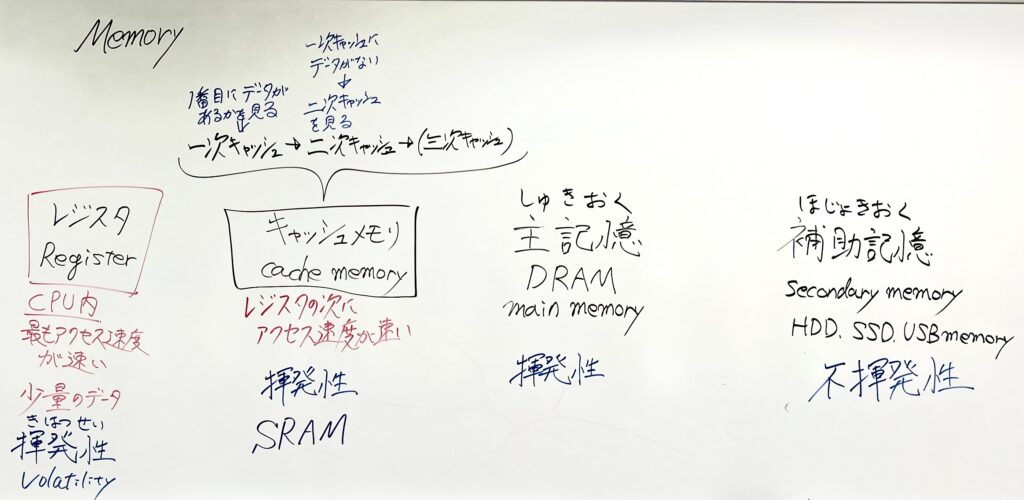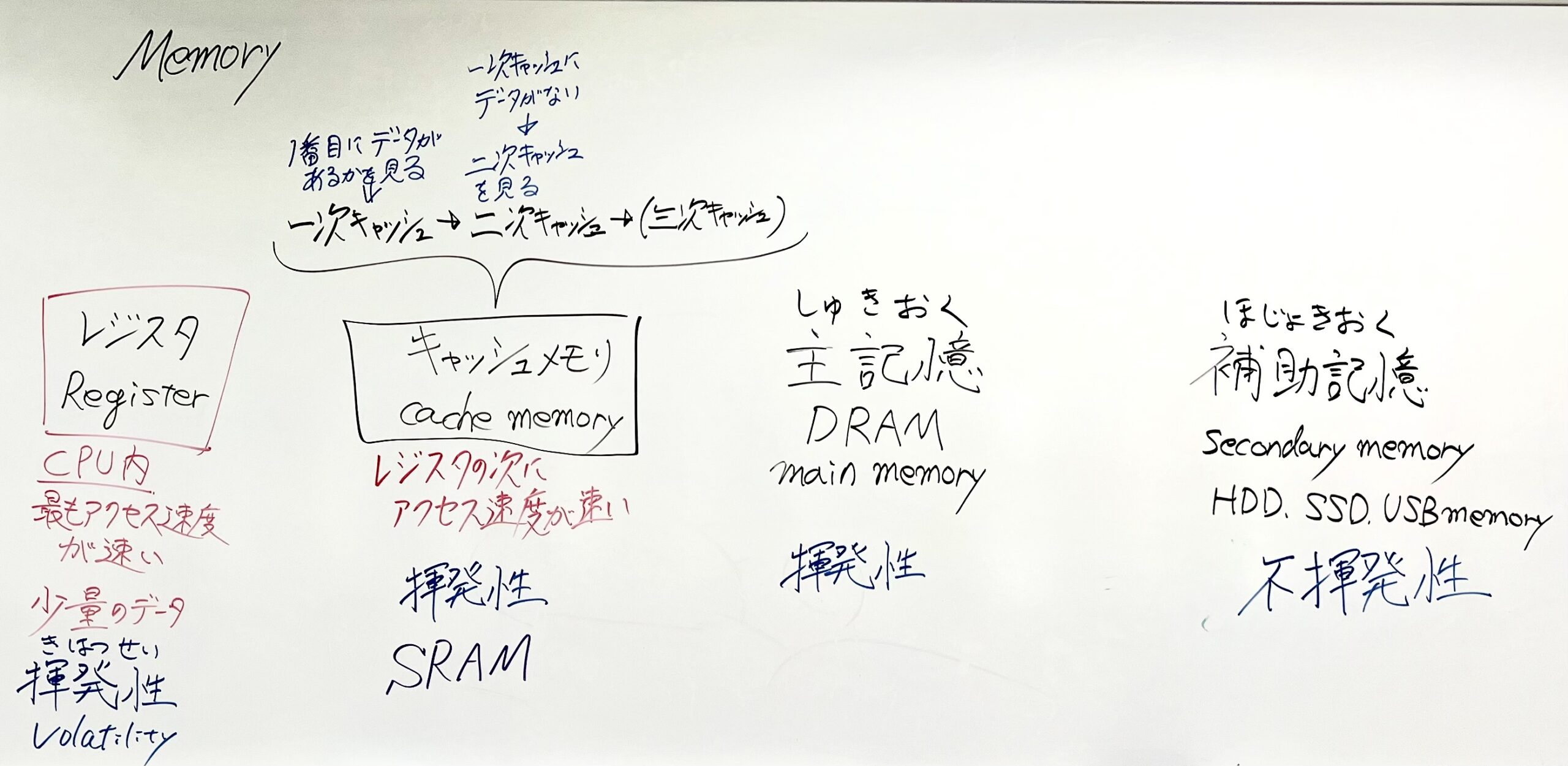1. レジスタ (registers):
CPU内部にあり、すべての記憶装置の中で最もアクセス速度が速いです。非常に少量のデータを保持することができますが、そのデータはCPUが直接処理を行う際に使用します。計算やデータ処理の間、必要な情報を即座に提供するために用いられる非常に高速な記憶場所です。揮発性。
Located inside the CPU, they are the fastest of all storage devices to access. It can hold very small amounts of data, which is used by the CPU for direct processing. It is a very fast storage location used to provide needed information immediately during computation and data processing. Volatility.
2. キャッシュメモリ (cache memory):
CPUのすぐそばに位置し、レジスタに次いでアクセス速度が速い記憶装置です。頻繁に使われるデータや命令を一時的に保存し、CPUが情報を迅速に取り出せるようにして、プロセッサの動作を高速化します。揮発性。キャッシュメモリは、使用される電気信号を通じてデータを読み出し、書き込みます。
Located right next to the CPU, this storage device has the second fastest access speed after registers. It temporarily stores frequently used data and instructions and allows the CPU to retrieve information quickly, thereby speeding up processor operation. Volatility. Cache memory reads and writes data through the electrical signals used.
3. 主記憶 (DRAM) (main memory (DRAM)):
システムが実行中のプログラムやデータを一時的に保持するために使用される記憶装置です。電力が供給されている間のみデータを保持する揮発性の特性を持ちますが、キャッシュメモリよりも容量が大きく、速度は遅いです。揮発性。
A storage device used to temporarily hold programs and data while the system is running. It is volatile, meaning it retains data only while power is supplied, but it is larger and slower than cache memory. Volatility.
4. 補助記憶 (HDDやSSD) (secondary(auxiliary) memory (HDD or SSD)):
データやプログラムを長期間保存するための記憶装置です。HDDは機械的な部分を含むため衝撃に弱いですが、大容量を安価に提供できます。SSDは物理的な動きがなく、速度が速く、耐衝撃性に優れていますが、HDDに比べると価格が高いです。不揮発性。
A storage device used to store data and programs for long periods of time; HDDs contain mechanical parts and are vulnerable to shocks, but can provide large capacities at low cost; SSDs have no physical movement, are fast and shock-resistant, but are more expensive than HDDs. Non-volatility.



